Steve travels #37: World Nomad Games day 2
For all Astana’s faults, it is nice to have good coffee a short stumble downstairs. I haven’t yet booked an event for this afternoon and settle on the final of Kazakh Wrestling: alongside Kok Baru this seems to be one of the two events that locals care about the most.
But first, horseback wrestling. If only I can work out how to get there.
The World Nomad Games website is pretty useful for describing sports, and some of the history and background of the games. The ticket buying experience is ok. But knowing where to go for an event, and how to get there? You’re on your own. There’s no map, no list of public transport options.
Eventually I deduce the rough location of the “Ethno-Aul”, which isn’t on any maps, near the hippodrome. I’m running a bit late to bus it, so taxi to where a mass of honking cars indicates a poorly signed road closure and hoof it.
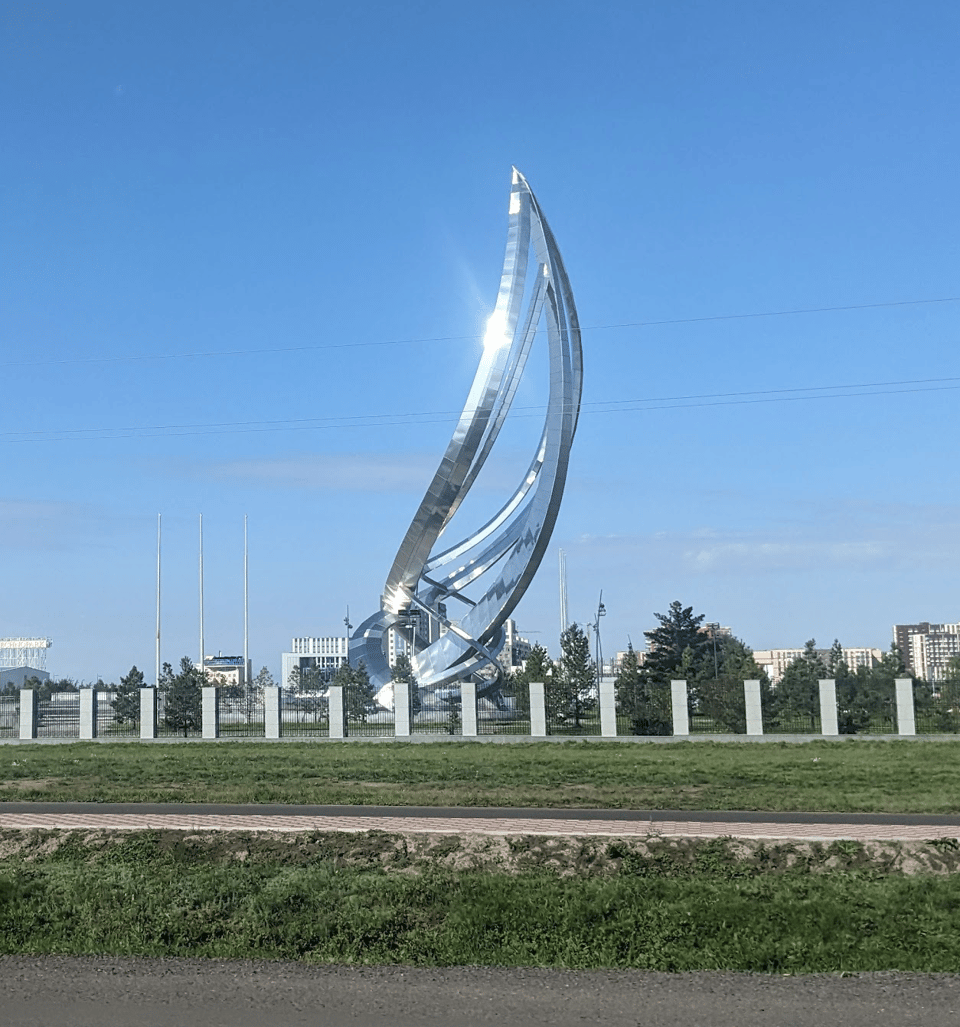
I’ve learnt nothing from the drink bottle confiscations of yesterday, but today, we’re allowed them.
The Ethno-Aul is unimpressive from the outside: it mostly resembles a refugee camp, with rows of white tarp tents and yurts. But step inside and suddenly there’s a bustling village vibe, and a great atmosphere.
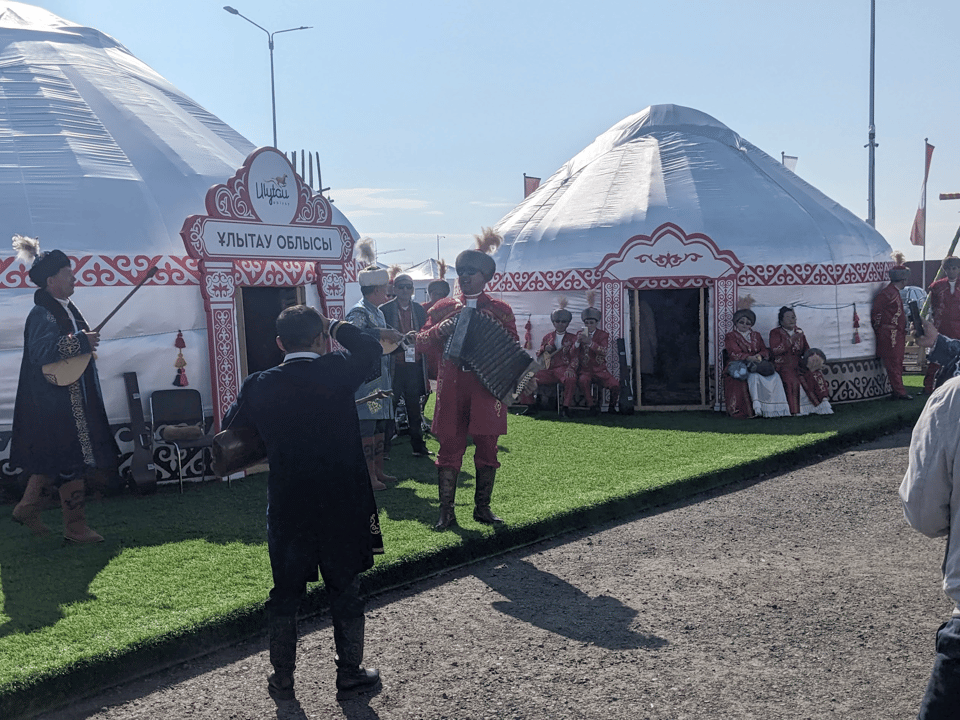
The organisers have done an amazing job creating this showcase of regional cultures, activities and craft shops. There’s an Almaty yurt, complete with fake apple trees out the front. There’s a mini museum of “steppes gold” and dozens more I’d explore if I wasn’t a bit museum-ed out.
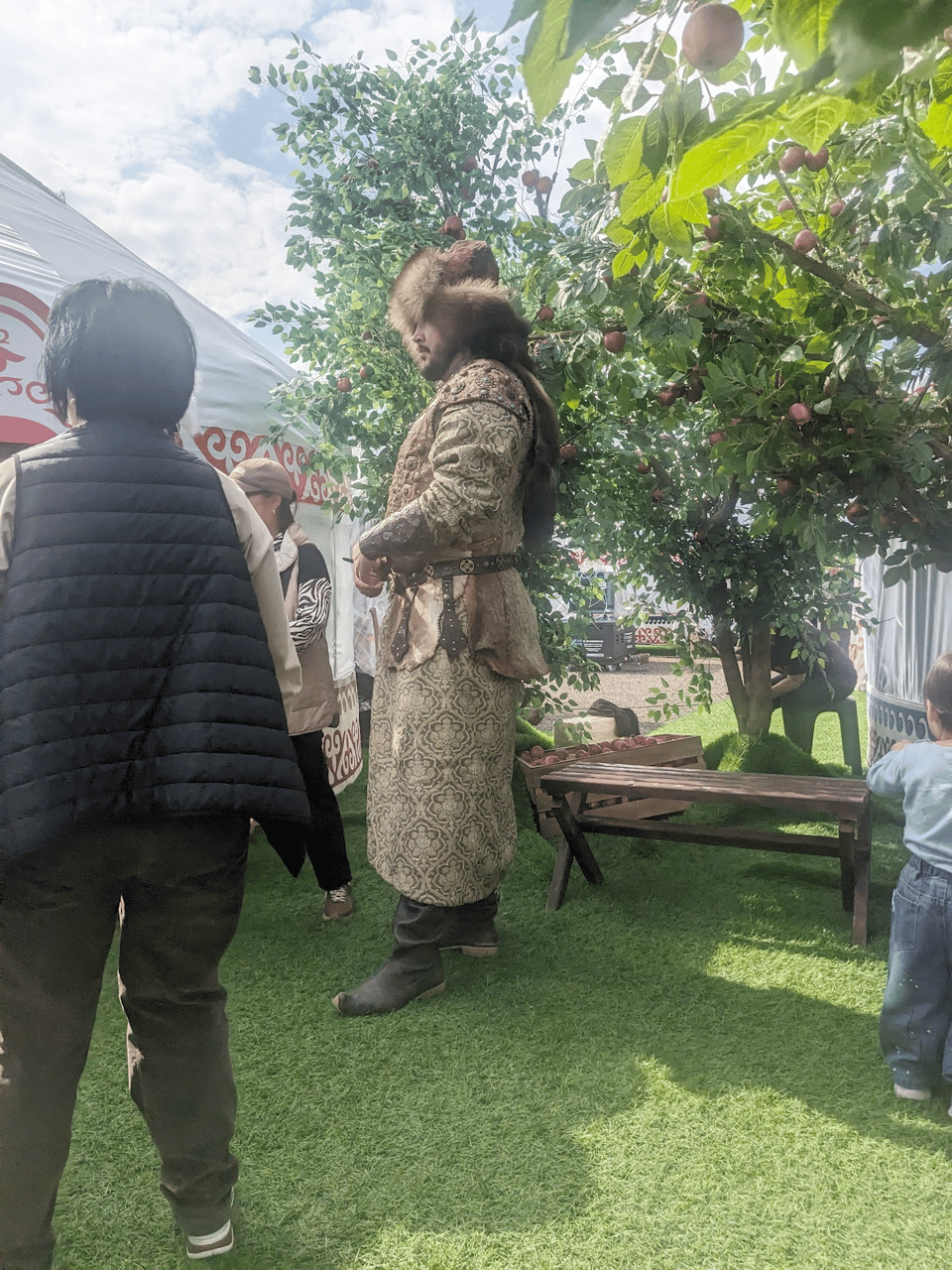
Wandering about are people in traditional costumes posing for selfies: a giant of a man in thick winter furs, a Mongolian warrior in shiny scale armour, women in elaborate gowns. And stalls selling paintings, felt and embroidery wall hangings, pottery, and even leather saddles.
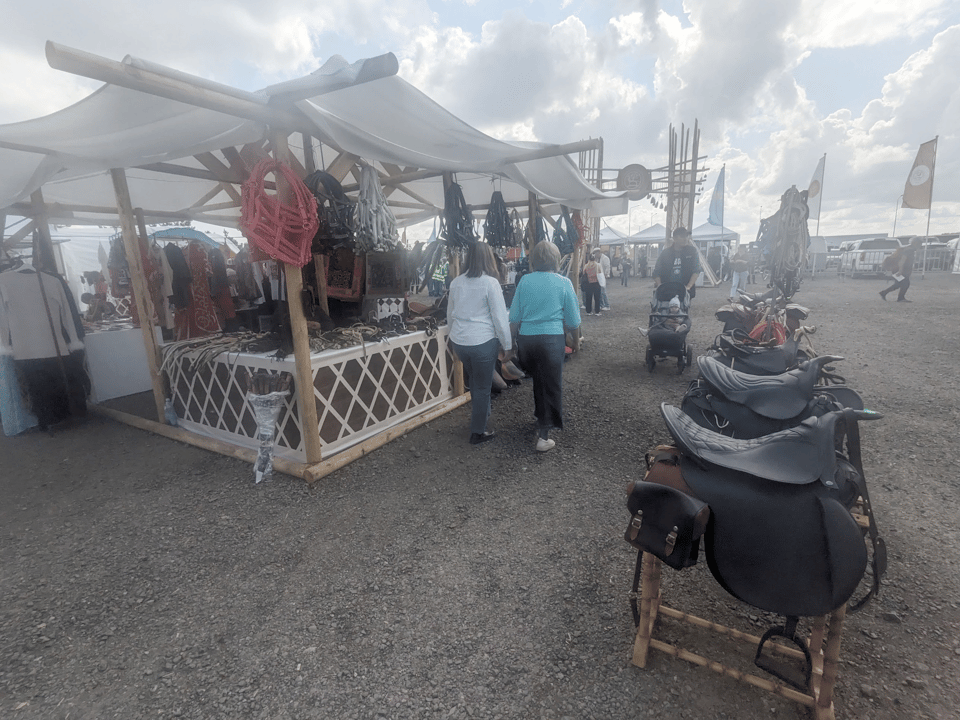
The horseback wrestling is in a small arena like a smallish dressage field. There’s a ring marked on the ground, about 20 metres across. They’re not enforcing the sectors on our tickets, and most people pick the side with the sun behind.

I’m apprehensive about the treatment of horses in this event. Central Asian have a pretty different view of animal cruelty, and have horses firmly in the “property” and “objects” category. I hope it’s not too confronting.
The first match starts. Two riders come out in blue and red satin dressing gowns like boxers, which they shed once in the middle. They will wrestle bare-chested, in jeans and riding boots, with a red or blue “belt” tied around their waist. A referee, also on horseback, calls them to the middle, they shake hands, and we’re off!
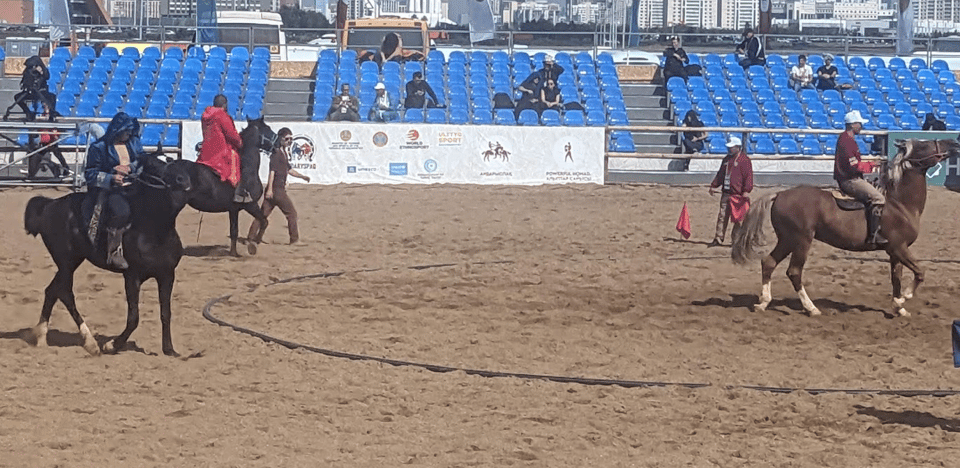
The men pull alongside, nose to tail, and lock arms, straining mightily, bracing their knees against the far side of the saddle. Five seconds later, one is dislodged from his saddle, and that’s it. Match over. Winner declared.
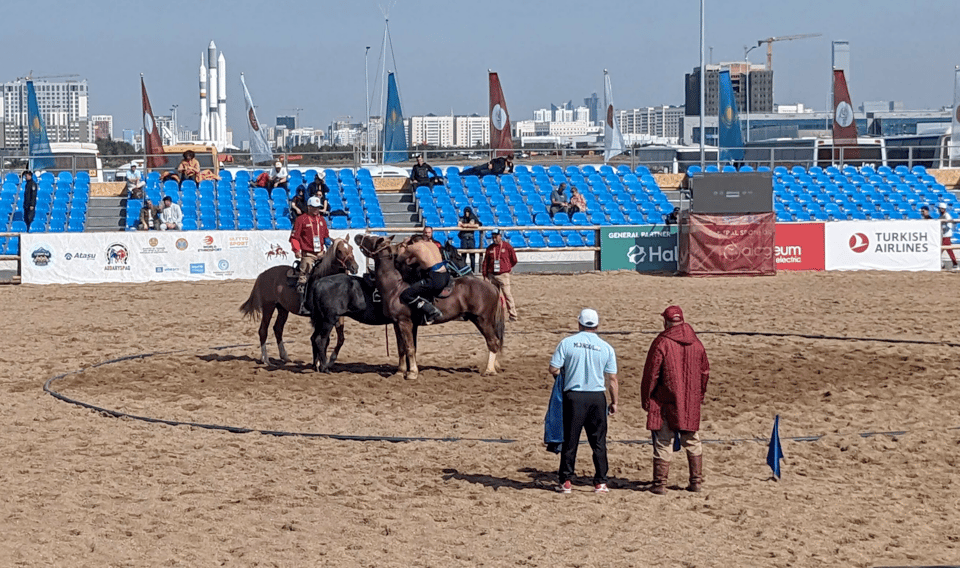
The next match is completely different. Both riders feint back and forth for a long minute before even making contact with each other. Then they grab, there is a flurry of movement, the horses get pushed out of the circular ring, and a winner is declared.
The next one is different again. A long stalemate with lots of pulling but no movement, the two horses standing completely still. It’s a relief that none of this seems particularly hard on the horses, and it’s generally over pretty quick.
Sometimes the riders grab each others’ belts. Sometimes they grab the nearest foot, attempting to shove it up and over, to push the rider off the far side.
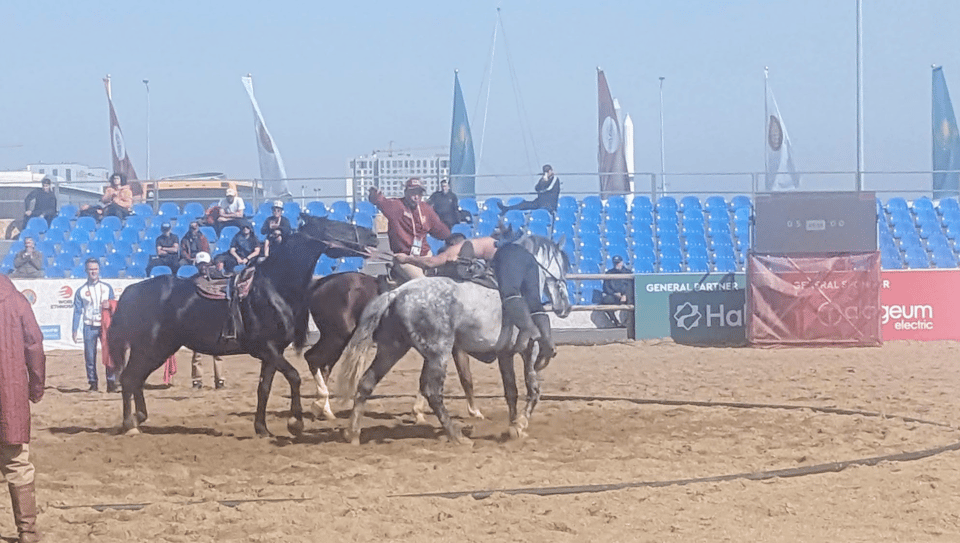
The basic rule is that if you come off your horse, you lose. But the exact definition of “off” is hard to discern. Sometimes a rider will be almost completely off but with both feet still in the stirrups. It can be very hard to tell if they’re about to win or lose. In one match, one guy has a solid grip around the torso of the other guy, who is hanging off to the side. But then that rider gets his horse to bolt, suddenly yanking the first rider off. It’s all pretty exciting.
Immediately next to the arena is the main stage of the “cultural program”, and from my seat I can see rehearsals taking place. There’s an orchestra of traditional instruments including many guitar-like things, singers, and dancers in huge hoop dresses.
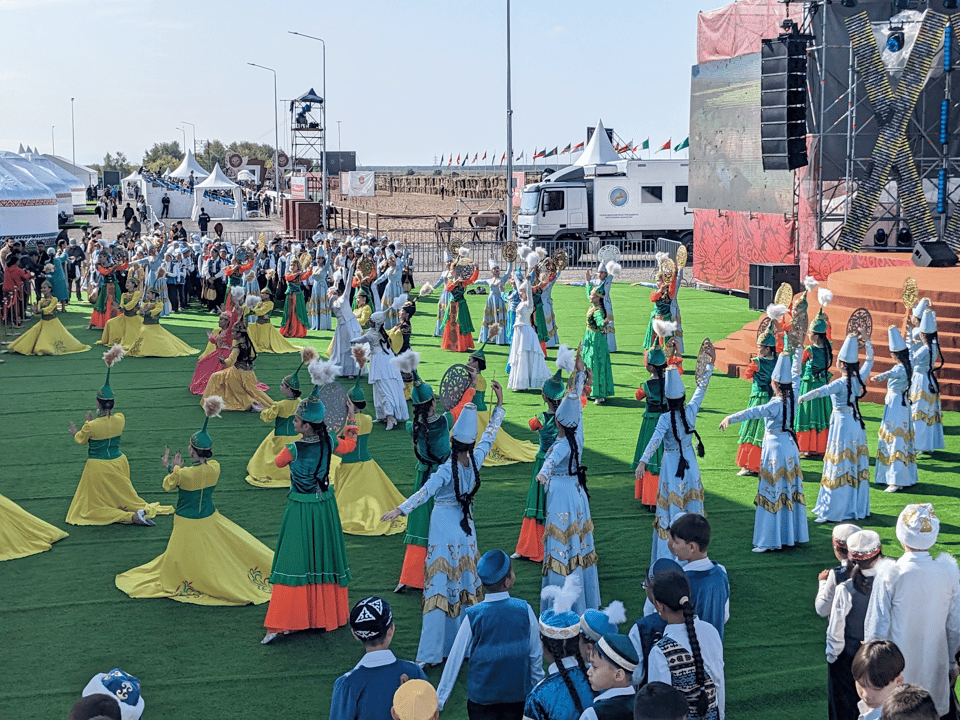
After the wrestling concludes, I explore a bit more. There’s the section where kids can try out some of the sports, like the knucklebone game and mas wrestling I saw yesterday, archery, and a game that looks like bocce with beanbags. Oh and camel rides, on beautiful two-humped camels with long fur and beautiful eyelashes.
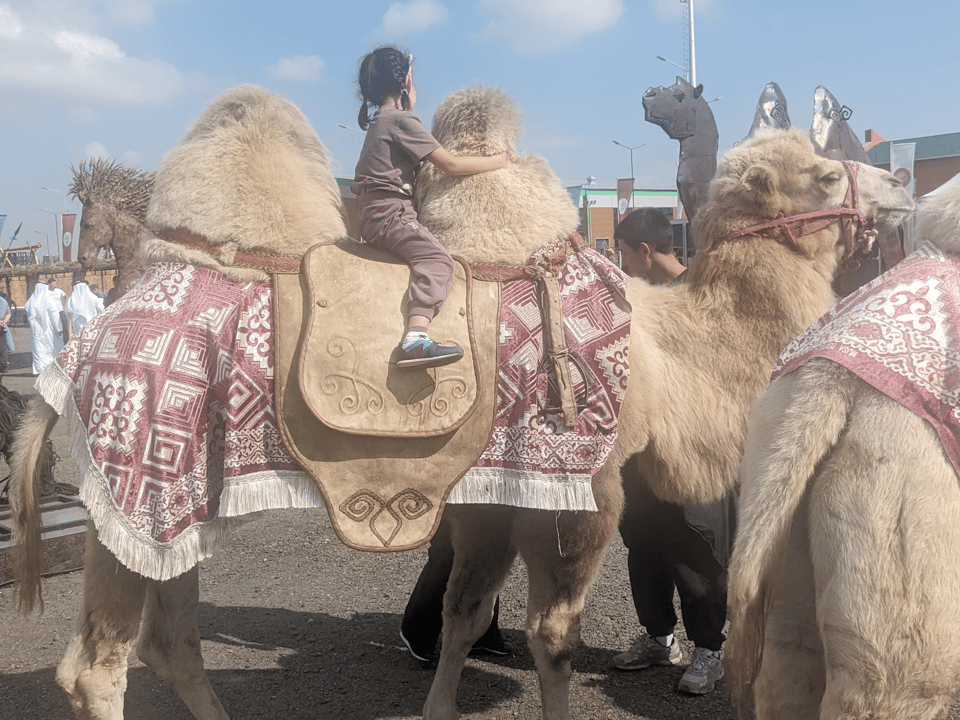
I catch a glimpse of horseback archery from around the stands. It seems the competitors have to ride a horse in a straight line while shooting three targets at right angles from about 20 metres. Their final score depends on both their speed and the three scores. It looks like it’s not uncommon to completely miss a target. Still very impressive.
Food is much the same fare as everywhere I’ve been, but bigger: vast vats of plov, long grills of shashlik, samsas, burgers. But then I spot something totally unique: a cheese and salad sandwich. They’re calling it a “vegan burger” but they can’t fool me, I’m having it.
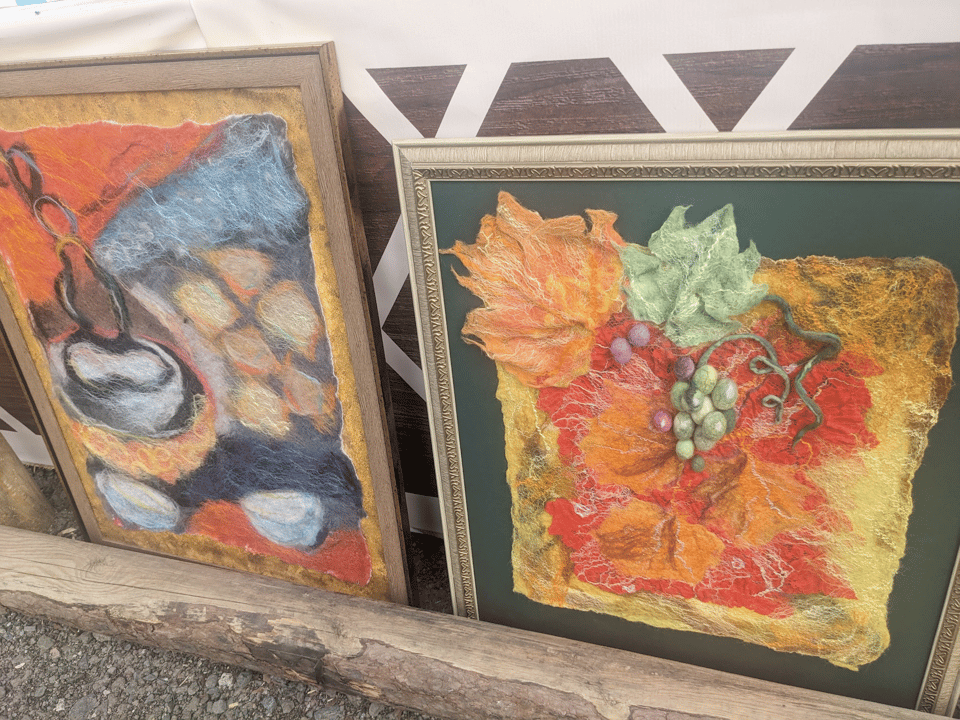
I bus back to the “Palace of Martial Arts”, conveniently near my hostel. It’s much more lively than the Ice Palace the previous day. I’m in the fourth row, with a Mongolian contingent behind me. Other than them, an Uzbekistan cheer squad and an Italian group opposite, there don’t seem to be any obvious fan clubs from different countries.
Kazakh Wrestling is one of a few similar sports on offer. It looks a lot like judo, down to the outfits (red and blue of course), except with shorts.
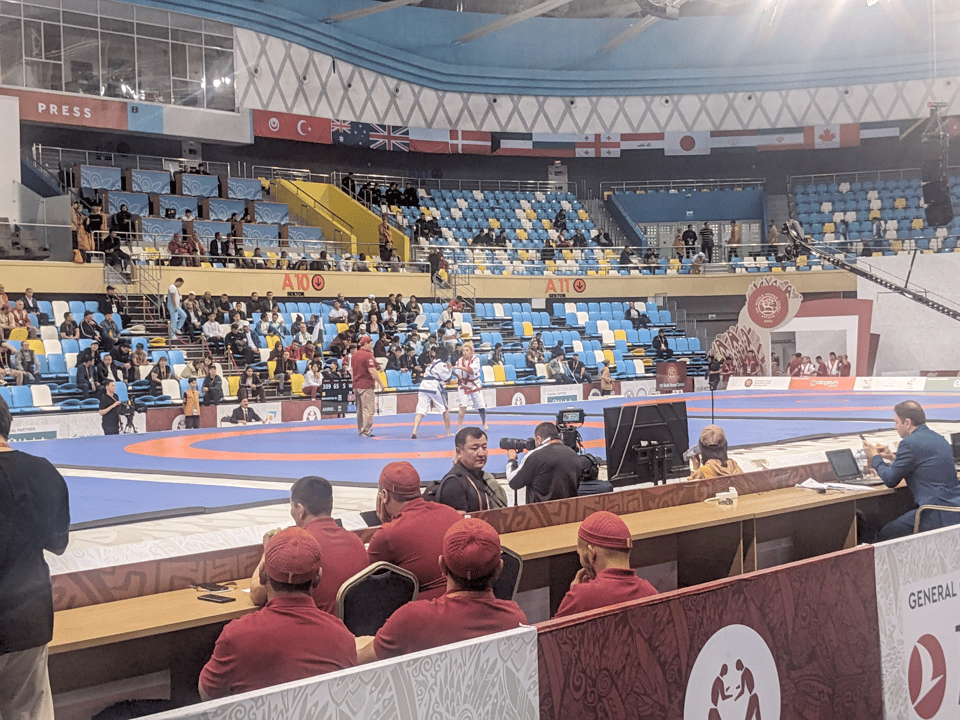
The basic goal is to throw your opponent onto their back. (“taza”). Do that and you win. Throwing them onto their side can get you points, which is decisive if there’s no taza. Throwing them onto their bum is a few points, too.

If any part of a competitor other than their feet touches the ground, the bout restarts. So there’s no grappling on the ground, just tussling while standing up and hopefully a throw.
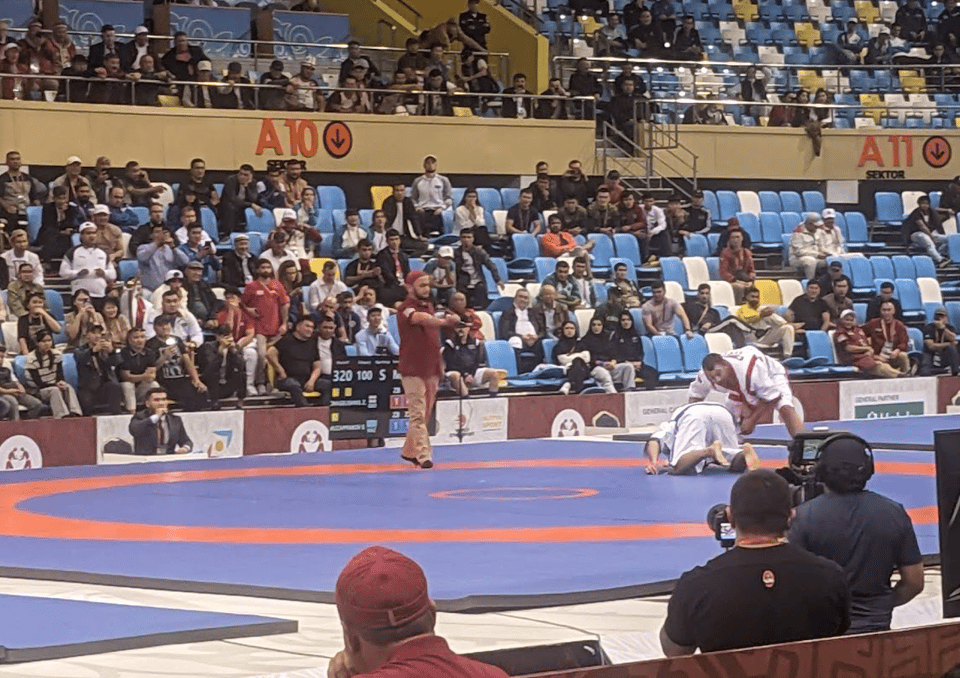
Matches can go up to 3 minutes and often get pretty desperate if one competitor has a point, and just needs to hang on for the win. I’m pretty into it.

When Kazakhstan is playing, the atmosphere is great, though they could really work on their chanting. Their competitors have a pretty good night of it, winning lots of medals, though Uzbekistan and surprisingly Italy also get a couple of golds.